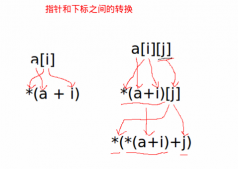首先给大家声明一点:需要 jdk 7 , tomcat需要支持websocket的版本
1.InitServlet
该类主要是用来初始化构造将来存储用户身份信息的map仓库,利用其初始化方法Init 初始化仓库, 利用其静态方法getSocketList 获得对应的用户身份信息。
webSocket ,我认为MessageInbound 用来识别登录人的信息,用它来找到对应的人,推送消息。每次登录都会产生一个MessageInbound。
这里的 HashMap<String,MessageInbound> :string 存储用户session的登录id,MessageInbound存储 推送需要的身份信息。以上属于个人口头话理解。
|
1
2
3
4
5
6
7
8
9
10
11
12
13
14
15
16
17
18
19
20
21
22
23
24
25
26
|
package socket; import java.nio.CharBuffer; import java.util.ArrayList; import java.util.HashMap; import java.util.List; import javax.servlet.ServletConfig; import javax.servlet.ServletException; import javax.servlet.http.HttpServlet; import org.apache.catalina.websocket.MessageInbound; public class InitServlet extends HttpServlet { private static final long serialVersionUID = -L; //private static List<MessageInbound> socketList; private static HashMap<String,MessageInbound> socketList; public void init(ServletConfig config) throws ServletException { // InitServlet.socketList = new ArrayList<MessageInbound>(); InitServlet.socketList = new HashMap<String,MessageInbound>(); super.init(config); System.out.println("Server start============"); } public static HashMap<String,MessageInbound> getSocketList() { return InitServlet.socketList; } /* public static List<MessageInbound> getSocketList() { return InitServlet.socketList; } */} |
2.MyWebSocketServlet
websocket用来建立连接的servlet,建立连接时,首先在session获取该登录人的userId,在调用MyMessageInbound构造函数传入userId
|
1
2
3
4
5
6
7
8
9
10
11
12
13
14
15
16
17
18
19
20
21
22
23
24
25
26
27
28
29
30
31
32
33
|
package socket; import java.io.IOException; import java.io.PrintWriter; import java.nio.CharBuffer; import javax.servlet.ServletException; import javax.servlet.http.HttpServlet; import javax.servlet.http.HttpServletRequest; import javax.servlet.http.HttpServletResponse; import org.apache.catalina.websocket.StreamInbound; import org.apache.catalina.websocket.WebSocketServlet; /** * * @ClassName: MyWebSocketServlet * @Description: 建立连接时创立 * @author mangues * @date -- */ public class MyWebSocketServlet extends WebSocketServlet { public String getUser(HttpServletRequest request){ String userName = (String) request.getSession().getAttribute("user"); if(userName==null){ return null; } return userName; // return (String) request.getAttribute("user"); } @Override protected StreamInbound createWebSocketInbound(String arg, HttpServletRequest request) { System.out.println("##########"); return new MyMessageInbound(this.getUser(request)); } } |
3.onOpen方法调用InitServlet的map身份仓库,
放入用户userId 和 对应该登录用户的websocket身份信息MessageInbound (可以用userId来寻找到推送需要的 身份MessageInbound )
onTextMessage :用来获取消息,并发送消息
|
1
2
3
4
5
6
7
8
9
10
11
12
13
14
15
16
17
18
19
20
21
22
23
24
25
26
27
28
29
30
31
32
33
34
35
36
37
38
39
40
41
42
43
44
45
46
47
48
49
50
51
52
53
54
55
56
57
58
59
60
61
62
|
package socket; import java.io.IOException; import java.nio.ByteBuffer; import java.nio.CharBuffer; import java.util.HashMap; import org.apache.catalina.websocket.MessageInbound; import org.apache.catalina.websocket.WsOutbound; import util.MessageUtil; public class MyMessageInbound extends MessageInbound { private String name; public MyMessageInbound() { super(); } public MyMessageInbound(String name) { super(); this.name = name; } @Override protected void onBinaryMessage(ByteBuffer arg) throws IOException { // TODO Auto-generated method stub } @Override protected void onTextMessage(CharBuffer msg) throws IOException { //用户所发消息处理后的map HashMap<String,String> messageMap = MessageUtil.getMessage(msg); //处理消息类 //上线用户集合类map HashMap<String, MessageInbound> userMsgMap = InitServlet.getSocketList(); String fromName = messageMap.get("fromName"); //消息来自人 的userId String toName = messageMap.get("toName"); //消息发往人的 userId //获取该用户 MessageInbound messageInbound = userMsgMap.get(toName); //在仓库中取出发往人的MessageInbound if(messageInbound!=null){ //如果发往人 存在进行操作 WsOutbound outbound = messageInbound.getWsOutbound(); String content = messageMap.get("content"); //获取消息内容 String msgContentString = fromName + " " + content; //构造发送的消息 //发出去内容 CharBuffer toMsg = CharBuffer.wrap(msgContentString.toCharArray()); outbound.writeTextMessage(toMsg); // outbound.flush(); } /* for (MessageInbound messageInbound : InitServlet.getSocketList()) { CharBuffer buffer = CharBuffer.wrap(msg); WsOutbound outbound = messageInbound.getWsOutbound(); outbound.writeTextMessage(buffer); outbound.flush(); } */ } @Override protected void onClose(int status) { InitServlet.getSocketList().remove(this); super.onClose(status); } @Override protected void onOpen(WsOutbound outbound) { super.onOpen(outbound); //登录的用户注册进去 if(name!=null){ InitServlet.getSocketList().put(name, this); } // InitServlet.getSocketList().add(this); } } |
4.消息处理类,处理前端发来的消息
|
1
2
3
4
5
6
7
8
9
10
11
12
13
14
15
16
17
18
19
20
21
|
package util;import java.nio.CharBuffer;import java.util.HashMap;/** * * @ClassName: MessageUtil * @Description: 消息处理类 * @author mangues* @date --*/public class MessageUtil { public static HashMap<String,String> getMessage(CharBuffer msg) { HashMap<String,String> map = new HashMap<String,String>(); String msgString = msg.toString(); String m[] = msgString.split(","); map.put("fromName", m[]); map.put("toName", m[]); map.put("content", m[]); return map; }} |
5.web配置
|
1
2
3
4
5
6
7
8
9
10
11
12
13
14
15
16
17
18
19
20
21
22
23
|
<?xml version="1.0" encoding="UTF-8"?><web-app version="3.0" xmlns="http://java.sun.com/xml/ns/javaee" xmlns:xsi="http://www.w3.org/2001/XMLSchema-instance" xsi:schemaLocation="http://java.sun.com/xml/ns/javaee http://java.sun.com/xml/ns/javaee/web-app_3_0.xsd"> <servlet> <servlet-name>mywebsocket</servlet-name> <servlet-class>socket.MyWebSocketServlet</servlet-class> </servlet> <servlet-mapping> <servlet-name>mywebsocket</servlet-name> <url-pattern>*.do</url-pattern> </servlet-mapping> <servlet> <servlet-name>initServlet</servlet-name> <servlet-class>socket.InitServlet</servlet-class> <load-on-startup>1</load-on-startup> </servlet> <welcome-file-list> <welcome-file>index.jsp</welcome-file> </welcome-file-list></web-app> |
6,前端,为方便起见,我直接用了两个jsp,在其中用<%session.setAttribute("user","小明")%>;来表示登录。
两个jsp没任何本质差别,只是用来表示两个不同的人登录,可以同两个浏览器打开不同的jsp,来聊天操作
A.小化
|
1
2
3
4
5
6
7
8
9
10
11
12
13
14
15
16
17
18
19
20
21
22
23
24
25
26
27
28
29
30
31
32
33
34
35
36
37
38
39
40
41
42
43
44
45
46
47
48
49
50
51
52
53
54
55
56
57
58
59
60
|
<%@ page language="java" contentType="text/html; charset=UTF-" pageEncoding="UTF-"%> <!DOCTYPE html> <html> <head> <meta http-equiv="Content-Type" content="text/html; charset=UTF-"> <title>Index</title> <script type="text/javascript" src="js/jquery ...min.js"></script> <%session.setAttribute("user", "小化");%> <script type="text/javascript"> var ws = null; function startWebSocket() { if ('WebSocket' in window) ws = new WebSocket("ws://localhost:/webSocket/mywebsocket.do"); else if ('MozWebSocket' in window) ws = new MozWebSocket("ws://localhost:/webSocket/mywebsocket.do"); else alert("not support"); ws.onmessage = function(evt) { //alert(evt.data); console.log(evt); $("#xiaoxi").val(evt.data); }; ws.onclose = function(evt) { //alert("close"); document.getElementById('denglu').innerHTML="离线"; }; ws.onopen = function(evt) { //alert("open"); document.getElementById('denglu').innerHTML="在线"; document.getElementById('userName').innerHTML='小化'; }; } function sendMsg() { var fromName = "小化"; var toName = document.getElementById('name').value; //发给谁 var content = document.getElementById('writeMsg').value; //发送内容 ws.send(fromName+","+toName+","+content); } </script> </head> <body onload="startWebSocket();"> <p>聊天功能实现</p> 登录状态: <span id="denglu" style="color:red;">正在登录</span> <br> 登录人: <span id="userName"></span> <br> <br> <br> 发送给谁:<input type="text" id="name" value="小明"></input> <br> 发送内容:<input type="text" id="writeMsg"></input> <br> 聊天框:<textarea rows="" cols="" readonly id="xiaoxi"></textarea> <br> <input type="button" value="send" onclick="sendMsg()"></input> </body> </html> |
B.小明
|
1
2
3
4
5
6
7
8
9
10
11
12
13
14
15
16
17
18
19
20
21
22
23
24
25
26
27
28
29
30
31
32
33
34
35
36
37
38
39
40
41
42
43
44
45
46
47
48
49
50
51
52
53
54
55
56
57
58
59
60
|
<%@ page language="java" contentType="text/html; charset=UTF-8" pageEncoding="UTF-8"%><!DOCTYPE html><html><head><meta http-equiv="Content-Type" content="text/html; charset=UTF-8"><title>Index</title><script type="text/javascript" src="js/jquery 2.1.1.min.js"></script><%session.setAttribute("user", "小明");%><script type="text/javascript">var ws = null;function startWebSocket() { if ('WebSocket' in window) ws = new WebSocket("ws://localhost:8080/webSocket/mywebsocket.do"); else if ('MozWebSocket' in window) ws = new MozWebSocket("ws://localhost:8080/webSocket/mywebsocket.do"); else alert("not support"); ws.onmessage = function(evt) { console.log(evt); //alert(evt.data); $("#xiaoxi").val(evt.data); }; ws.onclose = function(evt) { //alert("close"); document.getElementById('denglu').innerHTML="离线"; }; ws.onopen = function(evt) { //alert("open"); document.getElementById('denglu').innerHTML="在线"; document.getElementById('userName').innerHTML="小明"; };}function sendMsg() { var fromName = "小明"; var toName = document.getElementById('name').value; //发给谁 var content = document.getElementById('writeMsg').value; //发送内容 ws.send(fromName+","+toName+","+content);}</script></head><body onload="startWebSocket();"><p>聊天功能实现</p>登录状态:<span id="denglu" style="color:red;">正在登录</span><br>登录人:<span id="userName"></span><br><br><br>发送给谁:<input type="text" id="name" value="小化"></input><br>发送内容:<input type="text" id="writeMsg"></input><br>聊天框:<textarea rows="13" cols="100" readonly id="xiaoxi"></textarea><br><input type="button" value="send" onclick="sendMsg()"></input></body></html> |
以上所述是小编给大家介绍的使用JavaWeb webSocket实现简易的点对点聊天功能实例代码的相关知识,希望对大家有所帮助,如果大家有任何疑问请给我留言,小编会及时回复大家的。在此也非常感谢大家对服务器之家网站的支持!












